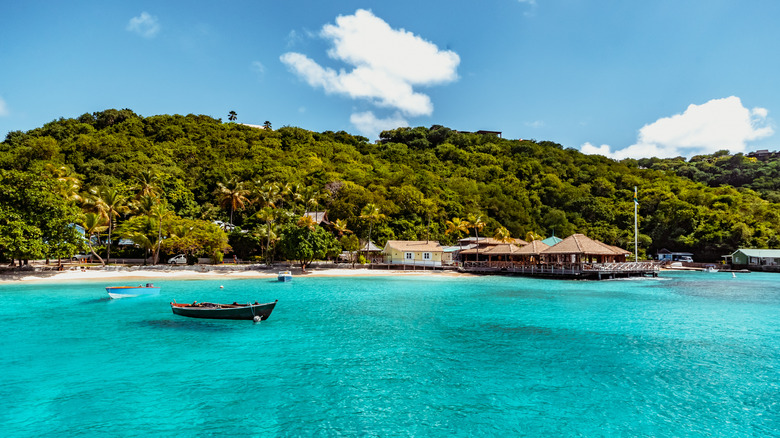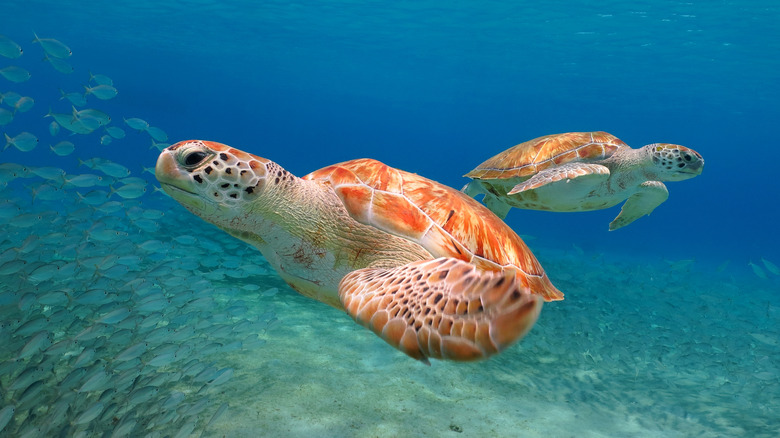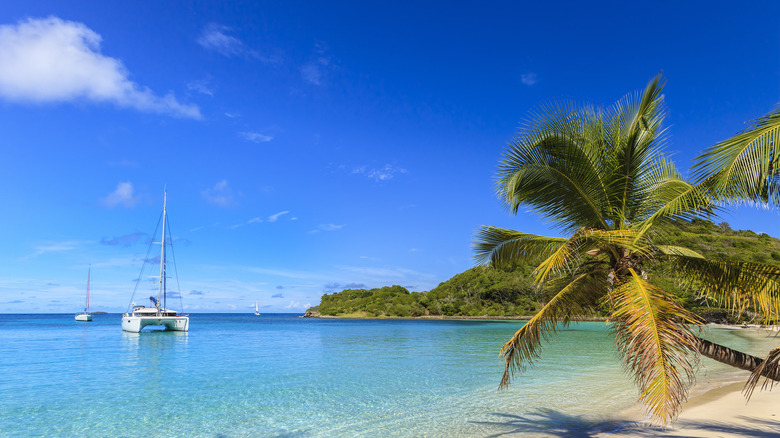Imagine yourself floating atop crystal clear water that feels like a bathtub. Beneath and around you are colorful fish and lovely branching coral, when suddenly, ouch. Someone else’s flipper just hit you in the side, and the fish were scared away. If you’ve gone snorkeling at a crowded and popular beach, you may have difficulty getting close to a coral reef to see the fish you’re there for. Maybe you want to take an underwater picture, and you can’t get one without other people in the background.
Snorkeling in places like Hawai’i, St. Croix, or other popular tourist spots won’t always give you the best experience. However, there is a series of islands in the Caribbean that are much less populated by vacationers and have some spectacular fish and other marine life to see through your mask. These are the islands of the Grenadines. Set between Saint Vincent and Grenada in the Lesser Antilles, there is so much to explore under the water, without the crowds. Here’s just a sampling of what you’ll find as far as uncrowded snorkeling fun in the Grenadines.
Some of the best beaches in the Grenadines for snorkeling

If you visit Mayreau Gardens, part of the Tobago Cays marine park that is a protected area, you’ll see robust coral reefs with green turtles and a number of colorful fish. There are some parts of this area that you can only get to by boat. If you scuba dive as well, there is the 1918 shipwreck of the Puruni to explore. Horseshoe Reef is another prime spot for snorkeling.
You may recognize the island of Mustique as the late Princess Margaret’s favorite spot from watching “The Crown.” The island’s Lagoon Bay is an easy spot for beginner snorkelers to practice. The larger island of Bequia is full of lovely beaches, though Princess Margaret Bay is a great spot to possibly see a nurse shark. The west side of the island’s Lower Bay has prime snorkeling as well.
A really cool place to visit is off the island of Byahaut, though you’ll have to take a boat to the bay. Don’t miss this one because of its underwater cave, the Bat Cave. While the caped crusader might not be there, you can explore what is, even if you’re snorkeling and not swimming.
If you’re spending time in the area and you’re looking for something a bit different, check out the Molinere Underwater Sculpture Park off of Granada, built in 2006. It’s an artificial reef, only accessible by boat, that is full of artists’ sculptures bolted to the ground you can snorkel or scuba through. One statue is of a man sitting at a desk with a typewriter.
What you may see while snorkeling in the Grenadines

Aside from the joy of swimming in Caribbean waters, the main reason we snorkel is for the animals. There are more than 450 species of fish here, like two species of angelfish, banded butterflyfish, and blue tang, as well as whales, turtles, seahorses, and plenty of coral and sea fans. The area is home to both hawksbill and green sea turtles, which are a prized sight. Bequia even hosts the Old Hegg Turtle Sanctuary to help increase the population.
If you’re lucky, you might see the spotted eagle rays that live in the area. You can’t miss them, with their wings out under the water, looking like someone covered them with polka dots. They have barbed stingers on their tails, and while they very rarely jump out of the water, they’re usually safe to swim with. You may also see a nurse shark sleeping under a rock (they’re nocturnal). They’re generally harmless, and some people do pet them in controlled environments. Don’t do that here as this is their home, and avoid their mouths which do have sharp teeth.
Other things you may see in the Grenadines include octopuses hanging out in their gardens of post-meal discarded shells, tarpon, which can get up to eight feet long, barracuda (avoid wearing shiny jewelry, which makes them think you may be prey), the invasive lionfish, and cushioned sea stars. Though you probably won’t see them while snorkeling, you might get a glimpse of a whale shark or a humpback whale from a boat.

